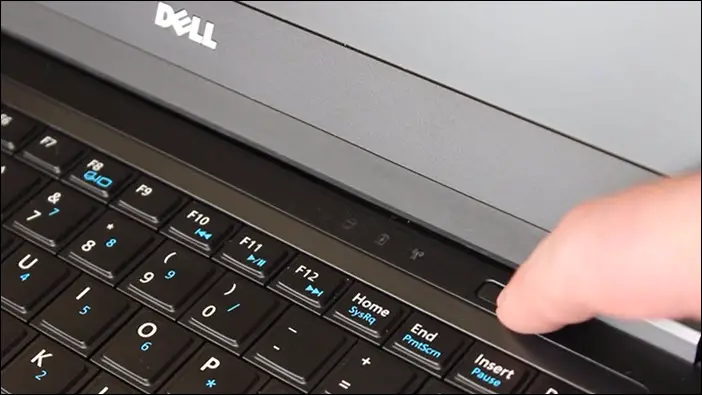
Understanding the Importance of Safely Turning Off Your Laptop
Turning off a laptop safely is crucial for maintaining its longevity and ensuring data integrity. Let’s delve into why abrupt shutdowns can be detrimental.
Content of the page
Why You Shouldn’t Force Shut Down
Force shutting down your Dell laptop might seem like a quick solution, especially when faced with unresponsiveness. However, it’s essential to understand the potential consequences of such actions.
The Risk of Data Loss
When you abruptly turn off your laptop, any unsaved data or ongoing processes are terminated instantly. This can lead to partial files, corrupted data, and lost work.
Potential Hardware Damage
Repeated force shutdowns can strain the laptop’s hardware components, leading to premature wear and potential malfunctions.
Software Corruption and Boot Issues
Force shutdowns can interrupt critical system processes, potentially causing software corruption. This can lead to boot issues, system errors, and software malfunctions.
Alternative Methods to Turn Off Your Dell Laptop
If the power button isn’t an option, there are several alternative methods to safely turn off your Dell laptop.
Using the Windows Start Menu
The Windows Start Menu provides a straightforward way to shut down your laptop safely.
Steps for Windows 10 and 11
- Click on the Start button (Windows logo) at the bottom left corner.
- Select the power icon.
- Choose Shut Down from the dropdown menu.
Steps for Earlier Windows Versions
- Click on the Start button.
- Hover over the arrow next to “Shut Down” or “Turn Off Computer.”
- Select Shut Down.
Utilizing Keyboard Shortcuts
Keyboard shortcuts offer a quick way to access power options without navigating through menus.
Common Shortcuts for Shutdown
- Alt + F4: Opens the shutdown window when no apps are open.
- Ctrl + Alt + Del: Access the security options menu, then select the power icon.
Creating Custom Shortcuts for Power Options
You can create custom keyboard shortcuts for specific power actions, offering a tailored approach to managing your laptop’s power settings.
Setting Up Automatic Shutdown Timers
If you want your laptop to shut down at a specific time, setting up an automatic shutdown timer can be beneficial.
Using Windows Task Scheduler
- Open Task Scheduler from the Start Menu.
- Create a new task and set the action to shut down.
- Specify the desired time for the shutdown.
Third-party Applications for Scheduled Shutdown
Several third-party applications, like Shutdown Timer and Wise Auto Shutdown, offer advanced features for scheduling automatic shutdowns.
Troubleshooting a Non-Functional Power Button
If your Dell laptop’s power button isn’t working, identifying the cause is the first step towards a solution.
Common Causes of Power Button Issues
Power button issues can arise from various factors, ranging from physical damage to software conflicts.
Physical Damage
Accidental drops, spills, or excessive force can damage the power button, rendering it non-functional.
Internal Circuitry Problems
Issues with the laptop’s internal circuitry, such as a disconnected ribbon cable, can prevent the power button from functioning.
Software and Driver Conflicts
Outdated or corrupted drivers can interfere with the power button’s functionality. Similarly, software conflicts can also lead to unresponsiveness.
Steps to Fix a Malfunctioning Power Button
Addressing a non-functional power button involves a systematic approach to identify and resolve the underlying issue.
Checking for Physical Obstructions
Ensure that there’s no debris or dirt obstructing the power button. A gentle cleaning with a soft brush can help.
Updating or Reinstalling Power Management Drivers
Visit the Dell website to download the latest power management drivers for your laptop model. Installing these can resolve software-related power button issues.
Seeking Professional Repair
If the above steps don’t resolve the issue, it’s advisable to consult a professional technician or Dell’s customer support.
Preventive Measures and Best Practices
Adopting preventive measures can prolong the lifespan of your laptop’s power button and ensure its consistent functionality.
Maintaining Your Laptop’s Power Button
Regular maintenance can prevent potential issues and ensure the power button’s optimal performance.
Cleaning Tips for Power Buttons
- Use a soft brush or compressed air to remove debris.
- Avoid using liquids directly on the button.
- Clean gently to avoid causing damage.
Avoiding Excessive Force and Spills
Using gentle pressure when pressing the power button and keeping liquids away from the laptop can prevent potential damage.
Setting Up Backup Power Options
Having backup power options ensures that you can safely turn off your laptop even if the power button fails.
Configuring Lid Close Actions
- Go to Power Options in the Control Panel.
- Select “Choose what closing the lid does.”
- Set the desired action, such as “Shut Down” or “Hibernate.”
Using External Devices for Power Control
External devices, like docking stations or USB power buttons, can offer alternative methods to control your laptop’s power without relying on the built-in power button.
